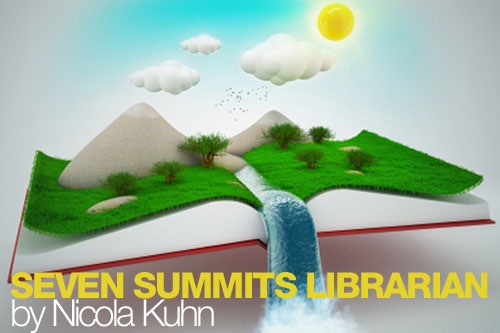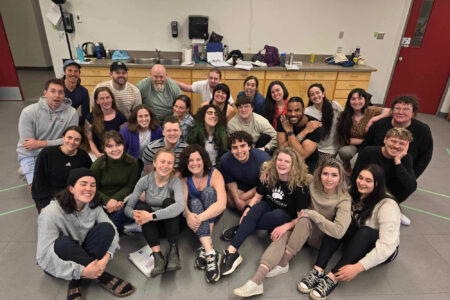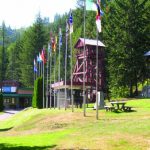When a vision becomes a reality
Personally, I believe this system is a good thing, especially for grade 12s. In a year we will be adults and will be forced to take our lives into our own hands and motivate ourselves, because nobody else will care. With the old system, we would be completely unprepared for life outside of high school, relying on teachers and parents to tell us what to do and when to do it.
My dad, as a college instructor, experiences this all the time. However, the new system will force us to take responsibility for our actions, something that I find quite liberating. Whether we fail or succeed is completely up to us. Welcome to real life, kids.
–Grade 12 student at Rossland Secondary School commenting on the new Blended Learning model at RSS.
The vision of implementing a blended learning model at RSS has been in the works for several years, as it takes time to research, discuss and produce a clear understanding of what this educational model will look like in reality. The last week has been one of intense learning by everyone: teachers, administration, students, administrative and educational assistants and parents. The learning curve has been steep but by Friday [of the first week] everyone seemed to be getting into the swing of things.
There was information overload on the first day when we presented the new model to the students. We started off the day with grades 10 to 12 in the gym and showed them an introductory video I worked on during the summer as part of a master’s course in the Teacher-Librarian Distance Learning program at U of A. We then provided three different seminar sessions to give students a chance to get detailed information and ask questions. Many left excited and immediately saw the possibilities, while others were hesitant to change a system that had been working fine for them.
To ensure student success in this new model, my colleague Bernie Hofmann and I spent a few weeks developing the ‘Navigator’ course housed on Moodle. As students will be navigating their way through learning, both online and face to face, we needed to be sure they were prepared with tools and information necessary to plan their learning paths. The Navigator course provides an introduction to Moodle; a technology tool box covering Google Docs and Google Calendar, social bookmarking, Easybib and social networking.
Students are also required to do a personal inventory of their learning styles. The course includes video tutorials on how to use the student Progress Checker: a tool to help students, teachers, teacher advisors, and parents keep track of a student’s progress as well as create short and long term goals. Finally, students have to set up their Digital Portfolio using Blogger or WordPress.
I was surprised at students’ resistance to using Twitter for school. As a teacher-librarian, Twitter is my number one source for professional development. I quickly realized the need for a future seminar session on how to use Twitter to create personal learning networks. (See Will Richardson and Rob Mancabelli’s new book Personal Learning Networks: Using the Power of Connections to Transform Education).
Many students breezed through the technology tool box but others felt overwhelmed by the new tools without any immediate application; they often questioned the need to use them. I know we learn best when we apply our learning to real life situations, and having students sign up for these web 2.0 tools before they have a need goes against this but having the accounts will save time. I will be providing seminar sessions for inquiry based projects and will go into more detail about the various tools when they have a context to learn them.
By the end of the week, students had signed up for the courses they wished to take first semester and linearly. Each student has a teacher advisor who makes sure students set short and long term goals and keep up to date with their progress checker. The progress checker also allows parents to see their child's progress in all of their courses. It is a key piece to making sure students don't fall through the cracks. The teacher advisory session runs every morning to check in with students, take attendance and provide guidance and support.
Throughout the week I have witnessed true learning. A group of students gathered in the library lab listening to one of their contemporaries teach a lesson in Social Studies. They told me they have divided up the reading and each is responsible for teaching the others the material. Without realizing it, these students are practicing effective communication and collaboration skills in an authentic situation. Other students took the initiative to rearrange the tables in the science/math resource area so they could collaborate more easily. With the removal of rigid timetables, bell schedules and traditional classes students are choosing to learn in ways that best suit them.
Our students are still young and although change is sometimes difficult to accept they adapt quickly. The real challenge has been for teachers. Some have worked at this school for their entire careers and to ask them to rethink not only what they teach, but how they teach is no small task. Blended learning pushes teachers to examine their practice, collaborate with other educators, create personal learning networks and most of all let go of some control.
Students have the opportunity to examine learning outcomes and design inquiry projects to meet outcomes across several disciplines. As one student commented on the school wide Moodle forum, “ I feel that the fact that we can incorporate some of our own interests in our projects and school work will make the learning more interesting for the students”. We are giving students much more independence and control of their own learning paths.
It also means that teachers are no longer the ‘expert in the room’. For many, the technology necessary to run a blended learning program is difficult to learn. We are asking a lot: create courses in Moodle, use Google Docs and Calendar and incorporate web 2.0 tools. The beauty is that teachers are learning these new skills alongside students and sharing in the metacognitive side of learning: excitement, frustration and satisfaction. It has been the students who have taught us how to sync the tools to iphones and ipads, showing us short cuts and problem solving technical issues.
They feel empowered teaching teachers.
Here is a comment posted on the student forum that sums up how many are feeling about blended learning at RSS:
I, myself, am very excited to see where this goes. I think great things can come of this program, however risky. I think it will test even the brightest students and prepare us further for post-secondary education. I can see this flourishing. It really is quite interesting to see how it will turn out.
I think it will throw a reality check into the faces of RSS's senior students. Can we handle our own education as well as we think we can? Are we truly ready to figure things out on our own in the future? This program is teaching much more than just technology and academics. There is certainly more than meets the eye here. I am truly curious as to how the small school that is Rossland Secondary will handle such a gutsy leap.
Yes, we are taking risks and we will make mistakes. Showing students that learning can be messy is a valuable lesson.
Nicola Kuhn is the teacher-librarian at Rossland Secondary School. This column first appeared on her blog, Seven Summits Librarian.
























